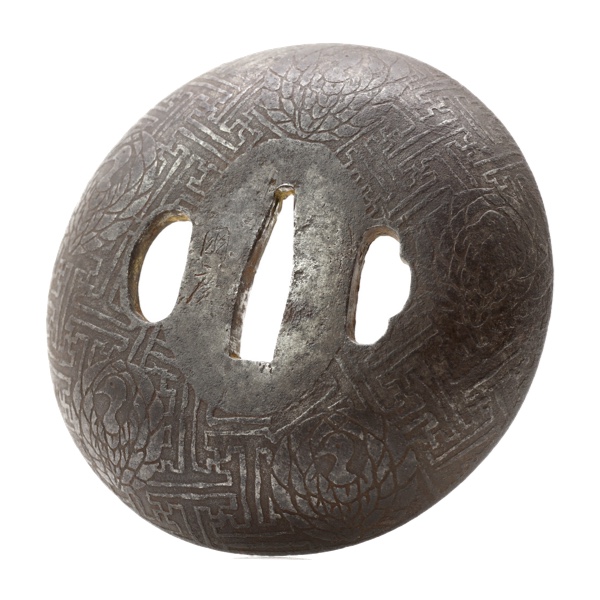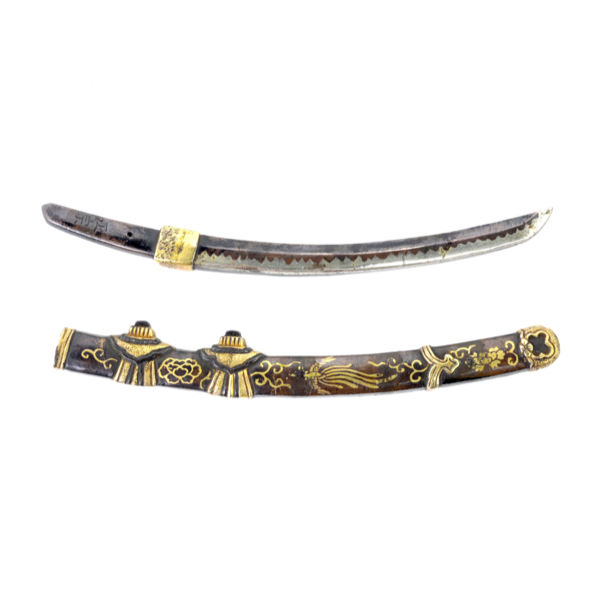
Masamune sword menuki
NBTHK Hozon. Charming menuki in the form of a sword, signed "Masamune" and a tachi scabbard.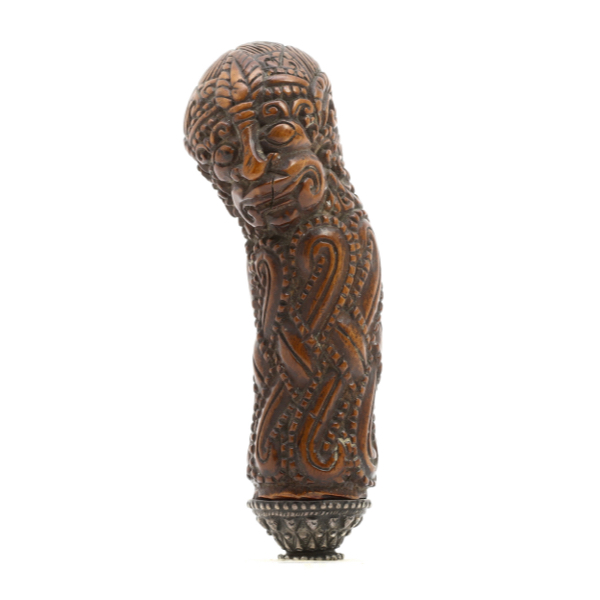
West Javanese keris hilt
19th century, probably originating from Cirebon.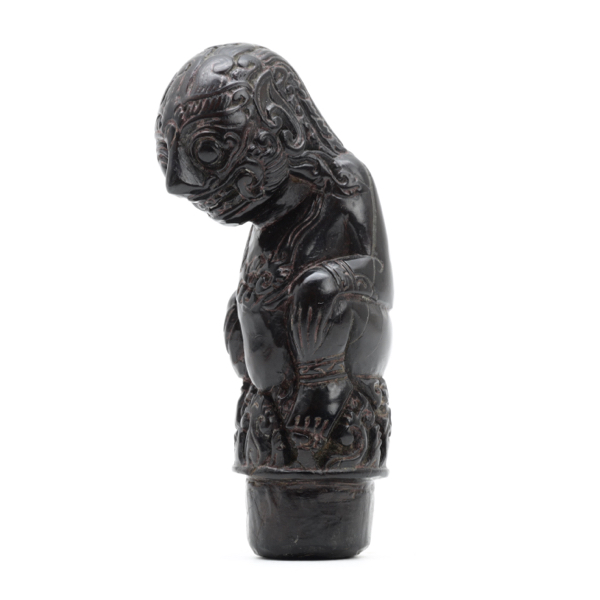
Early Bhima keris hilt
The Hindu mythical brother of Hanuman, the Monkey King.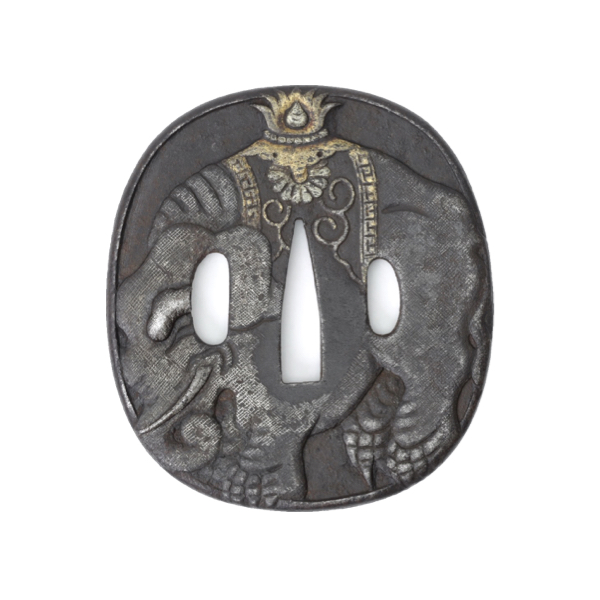
Yasuchika elephant tsuba
A 19th-century copy of an important cultural art object.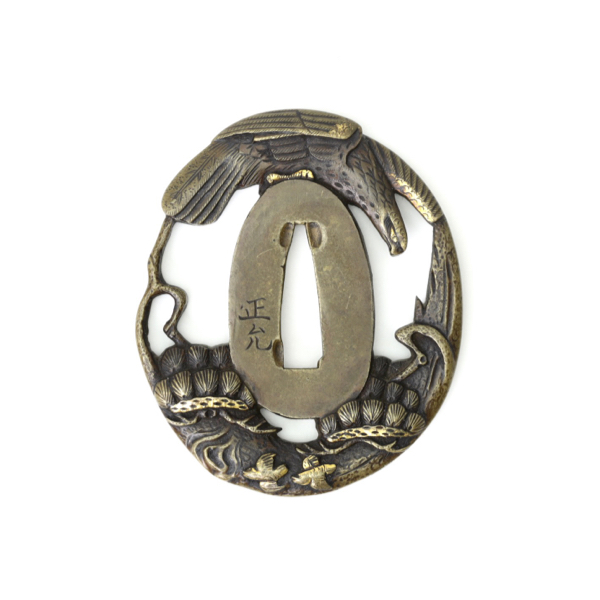
Hawk and pine tsuba
Carved out of copper alloy with details highlighted in gold.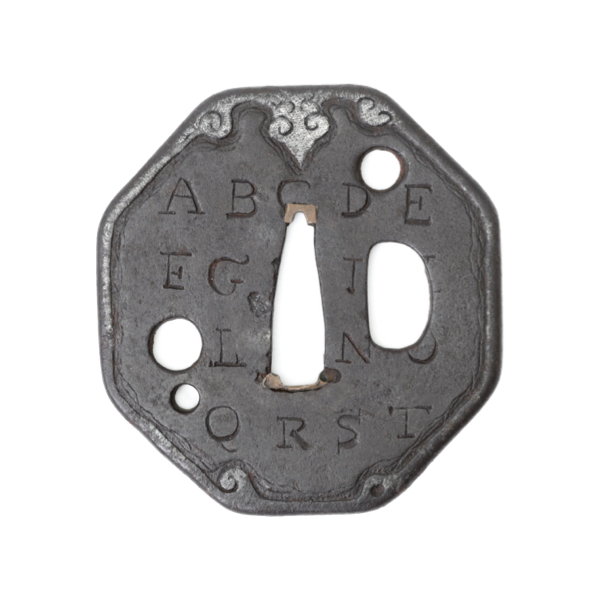
Early tsuba with alphabet
Curious early tsuba with the beginning of the Western alphabet inscribed into it.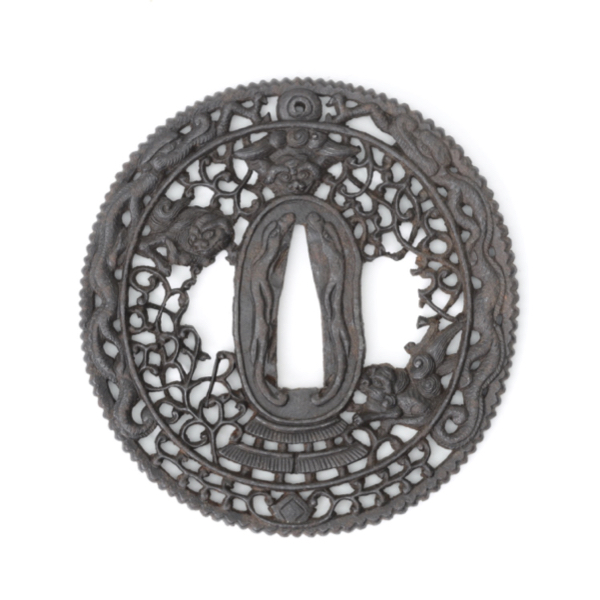
Fine pierced nanban tsuba
Very delicate work with carved guardian lions.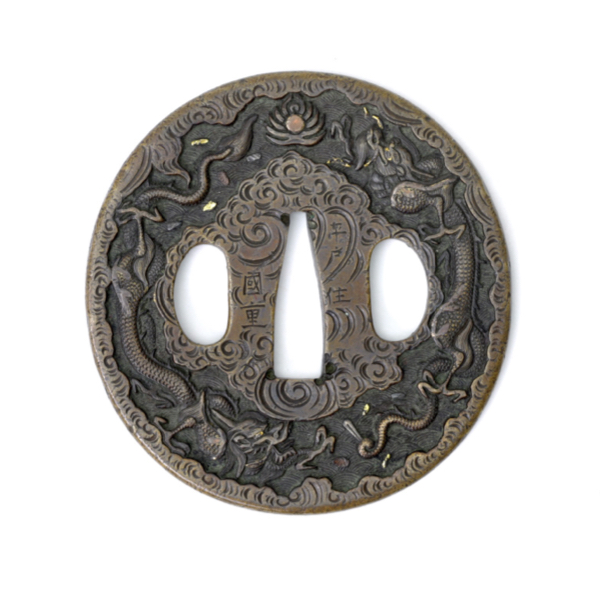
Hirado Kunishige tsuba
Of a copper alloy with a different shade on each side.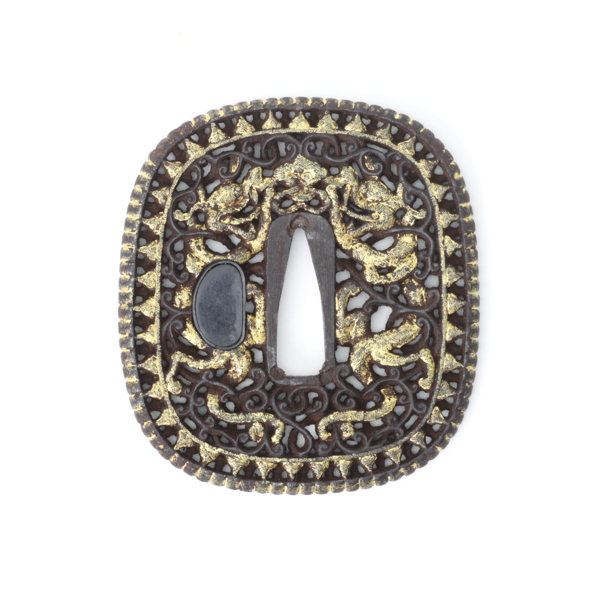
Small Chinese saber guard
Of pierced iron, elaborately cut with lotus petal border.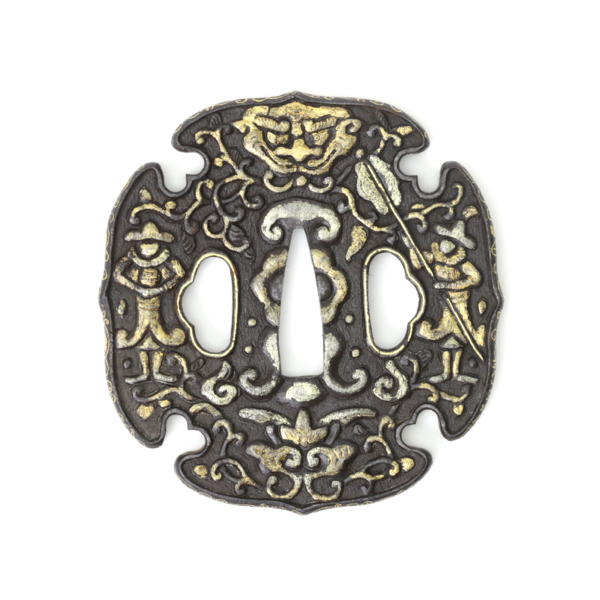
Thick Aoi gata tsuba with foreigners
With fine golden overlays, even on the thick rim.
Aoi-gata tsuba with foreigners
Unusual tsuba with foreign figures and Chinese auspicious symbols.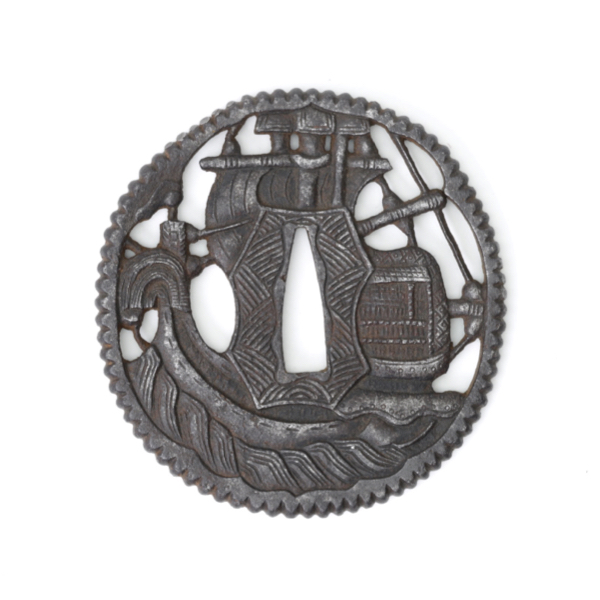
Iron nanban ship tsuba
Pierced and chiseled showing an 18th century European vessel.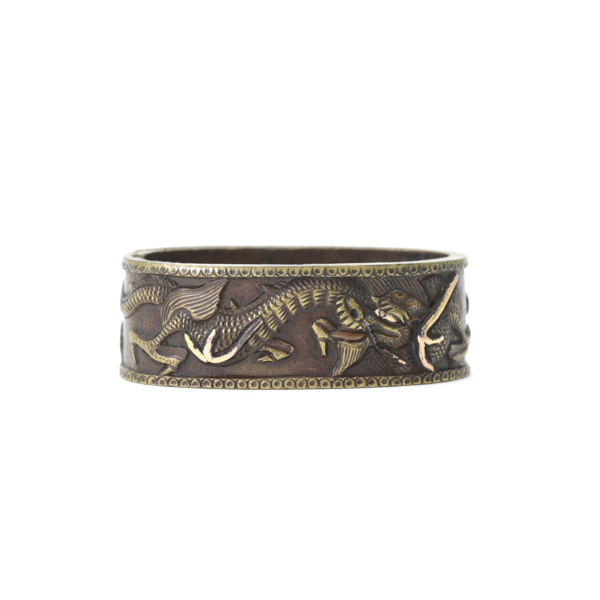
Hirado Kunishige fuchi
One of his classic designs, signed by the maker.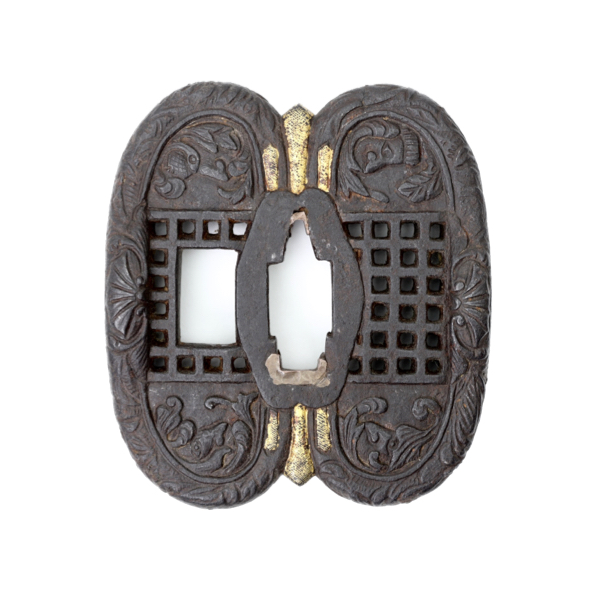
Curious lobed sword guard
Modeled after a smallsword guard, with carvings of Western figures.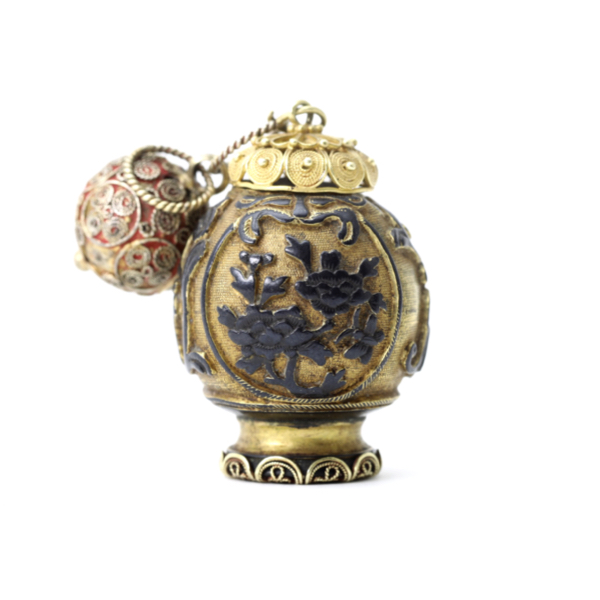
Sawasa smallsword pommel
Upgraded with filigree to resemble a snuff bottle.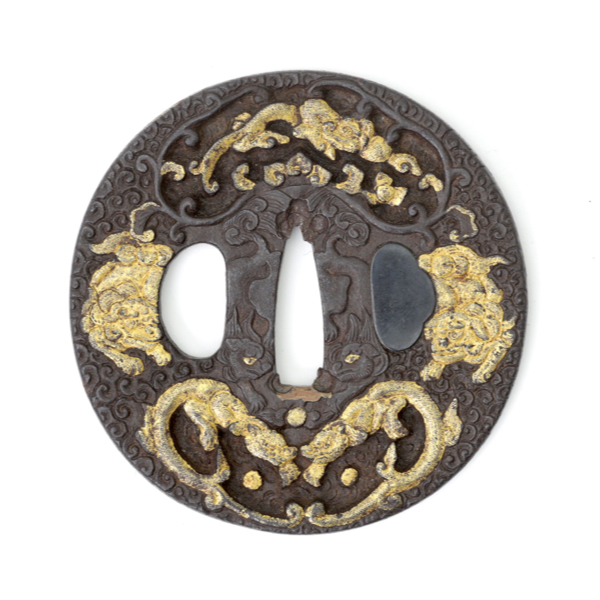
Unusual nanban tsuba
Very finely carved with designs reminiscent of export wares.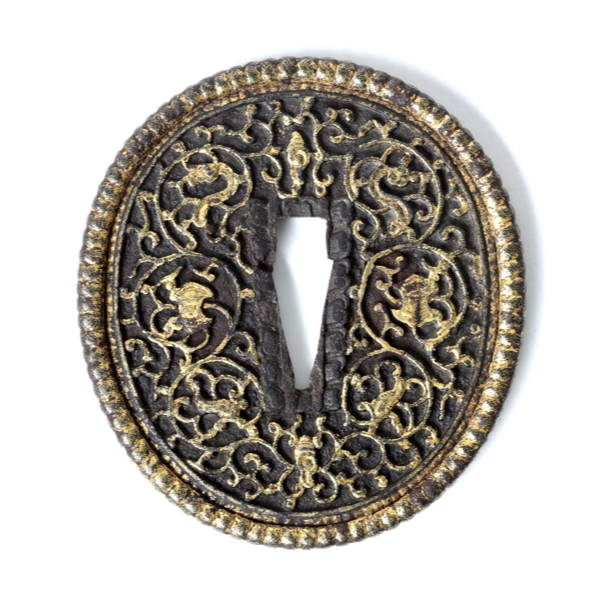
17th century Chinese saber guard
With the swirling arabesque motifs that are typical for this period.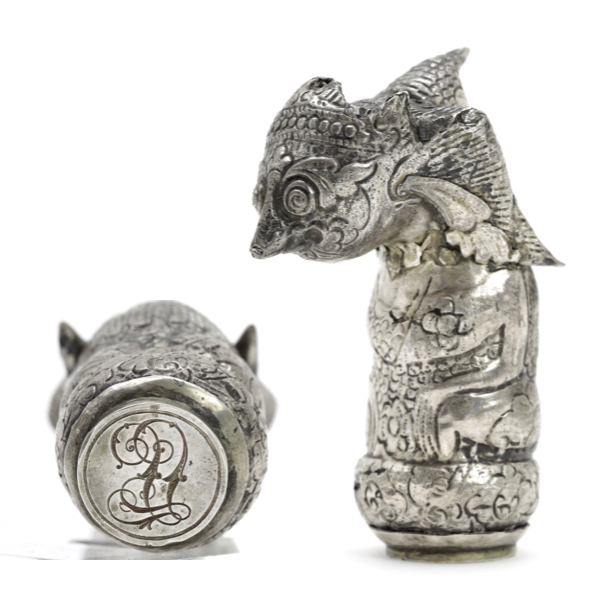
Nyamba keris hilt with seal
Rare old keris handle made into a European wax seal.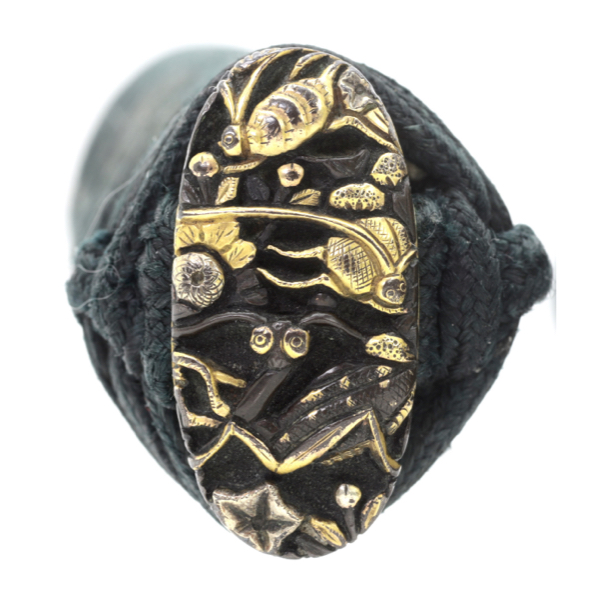
Mino-bori (美濃彫)
Language: Japanese
Source: Michitatsu's Sōken Kishō of 1781
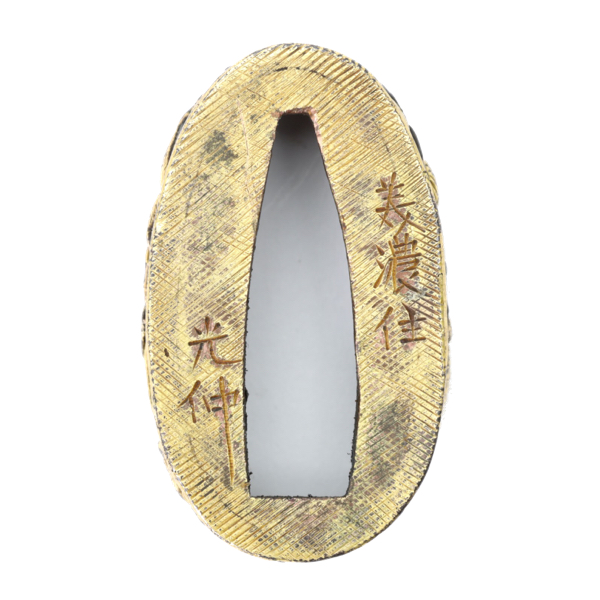
Mino Mitsunaka (美濃光仲)
A Japanese sword fittings artist who worked in the Mino-bori style.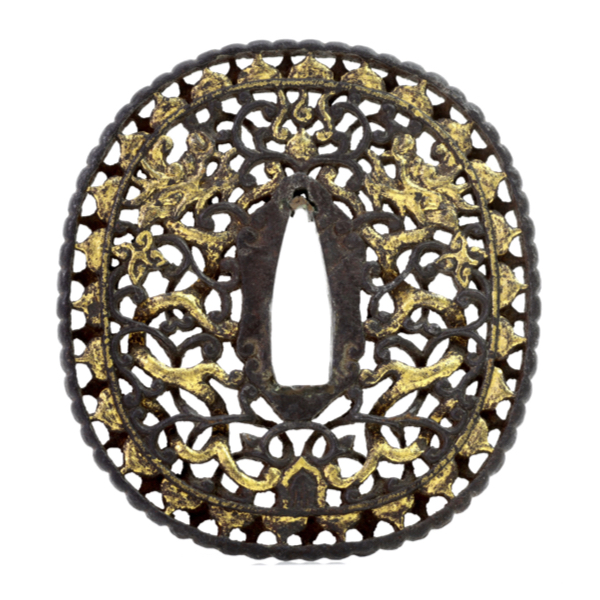
Southern Chinese openwork sword guard
In the style of northern work of the 16th and 17th centuries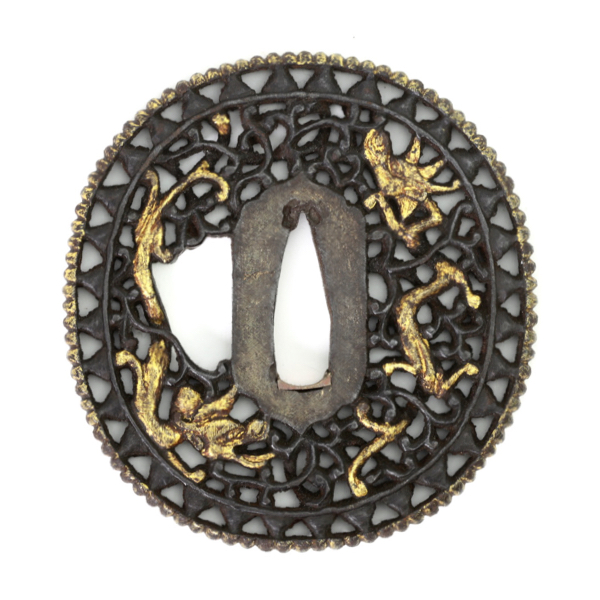
Assymetric dragon tsuba
Chinese work for the Japanese market.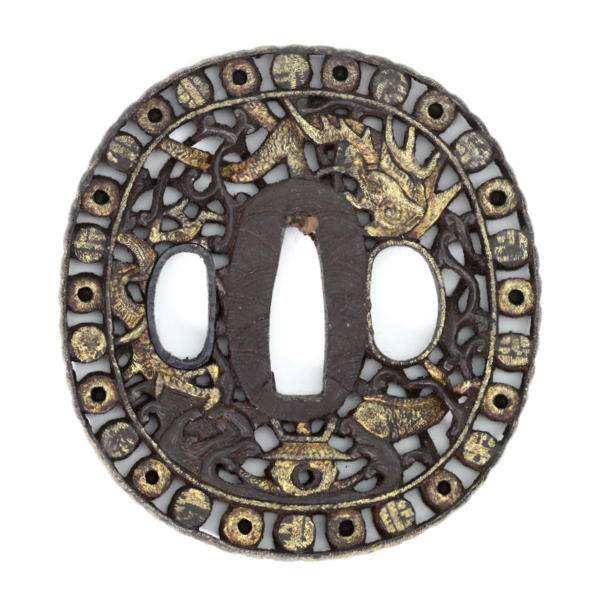
Canton tsuba with 28 "jewels"
Canton work for the Japanese market, with 28 metal balls in separate compartments.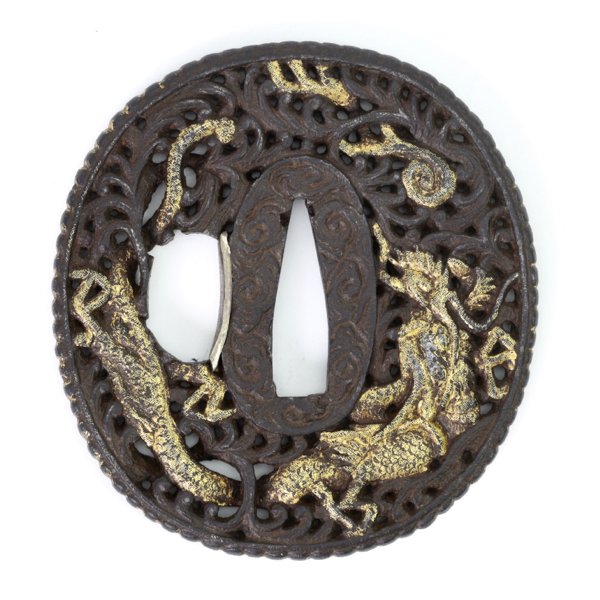
Early Canton tsuba
Made in Canton, China, for the Japanese market.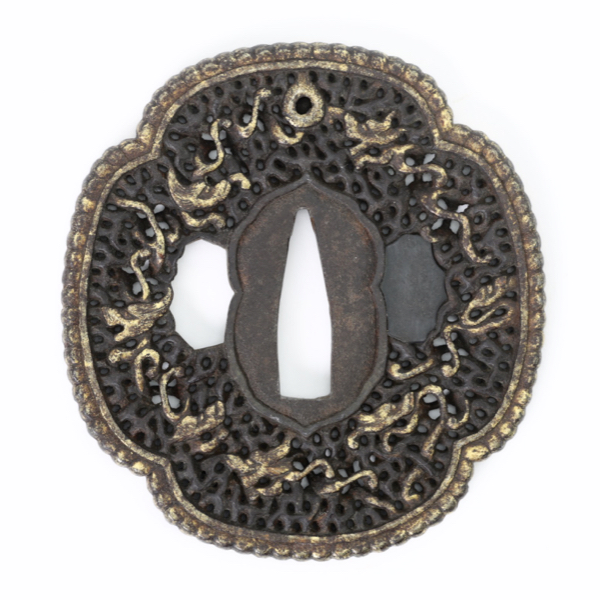
Lobed Canton tsuba
Made in Canton, China, for the Japanese market.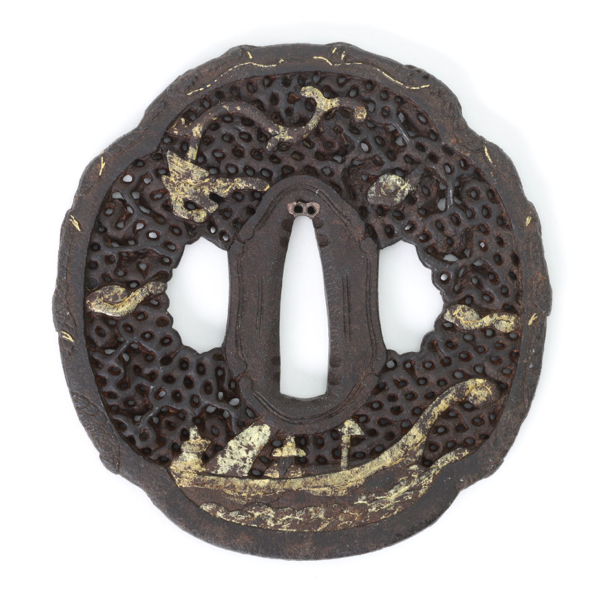
Canton tsuba with ship
Made in Canton, China, for the Japanese market.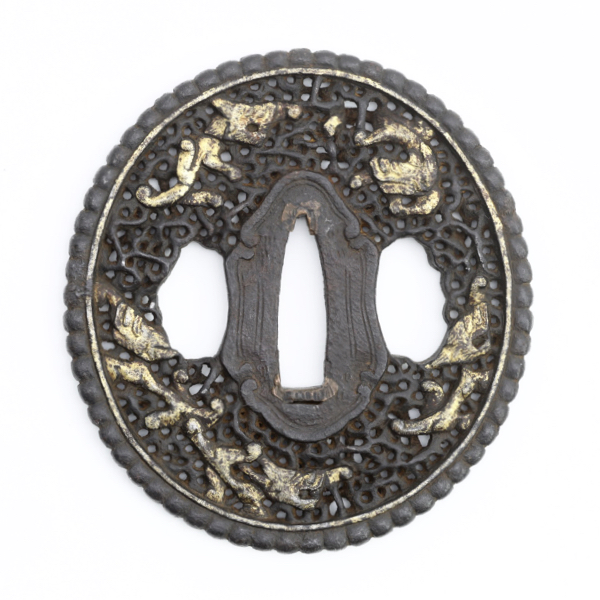
Five dragon Canton tsuba
Made in Canton, China, for the Japanese market.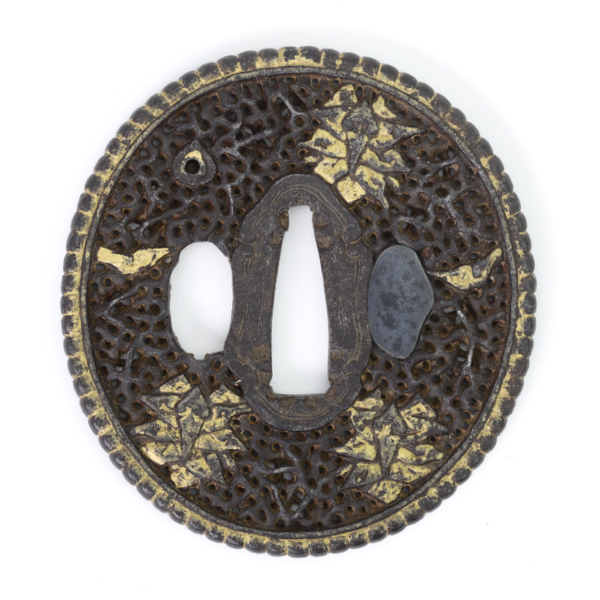
Water caltrop Canton tsuba
Made in Canton, China, for the Japanese market.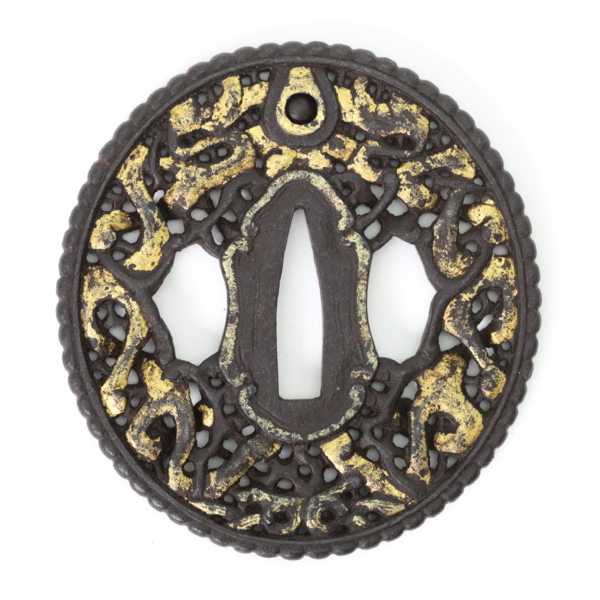
Facing dragon Canton tsuba
Made in Canton, China, for the Japanese market.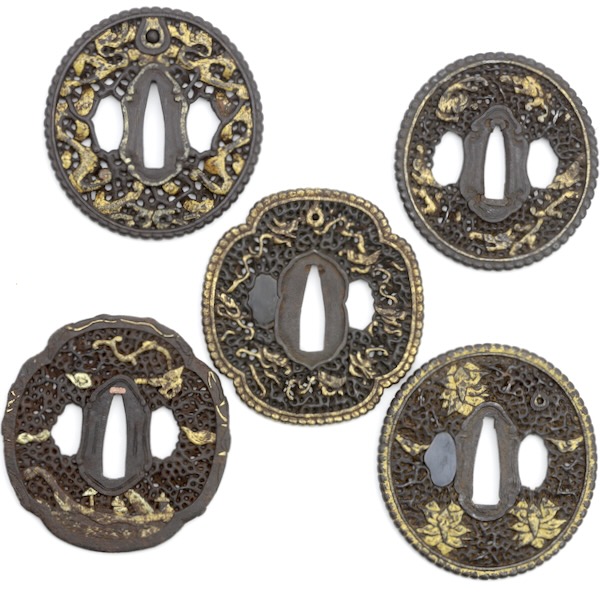
Nanban tsuba, a Canton group
Introduction
Among the genre generally classified as Nanban tsuba there is a distinct group with cha
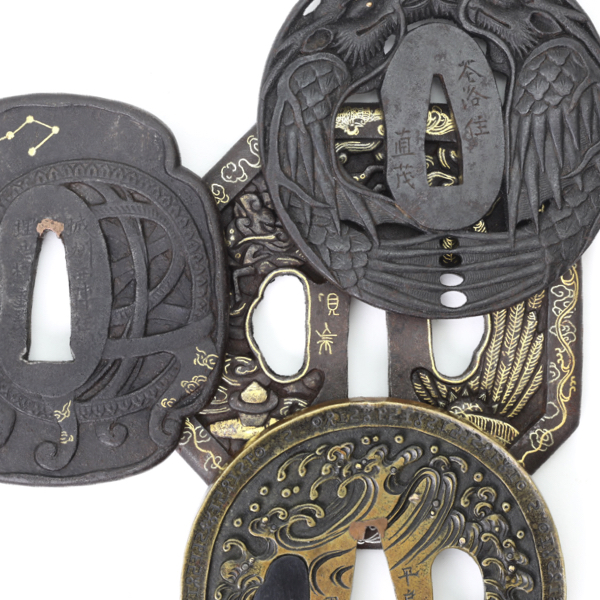
Signed "nanban tsuba"
Among the work classified as "nanban", signed work is very rare. Here are some examples of signed works in the style.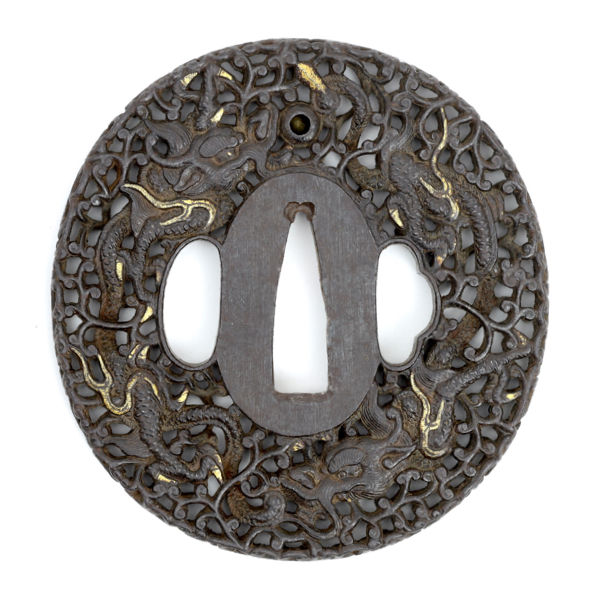
Yagami school nanban tsuba
A masterpiece of the genre. The Yagami school were excellent carvers of iron.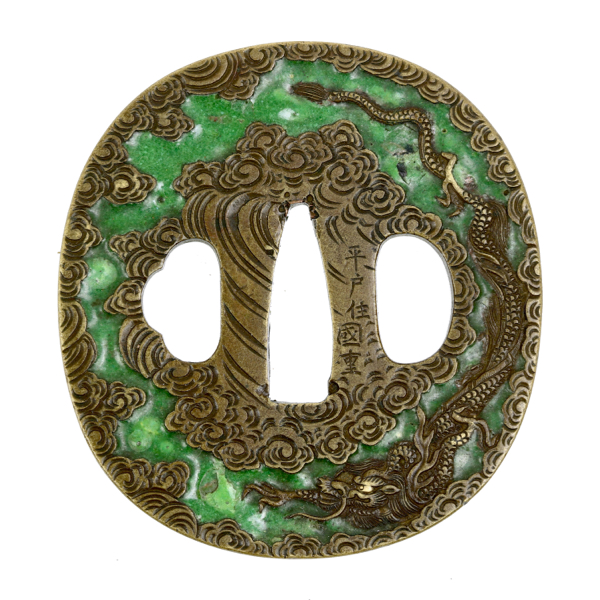
Enamelled Hirado Kunishige tsuba
Fine work and one of the very few enamelled tsuba by this maker.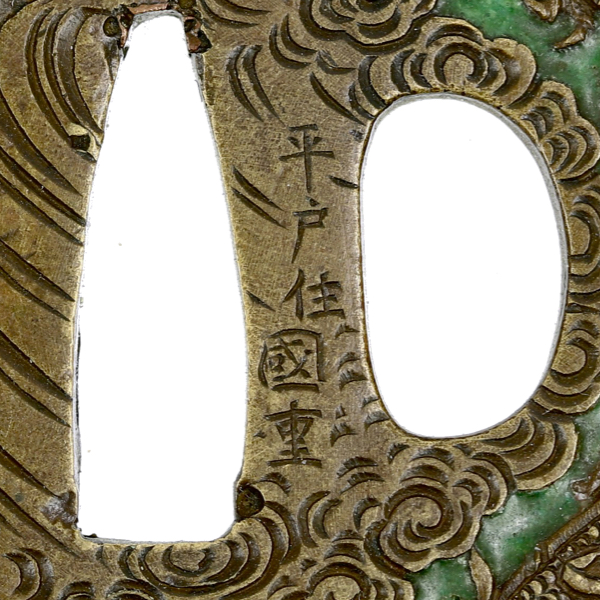
Hirado Kunishige (平戸市國重)
A group of Japanese sword fitting makers working on the island of Hirado.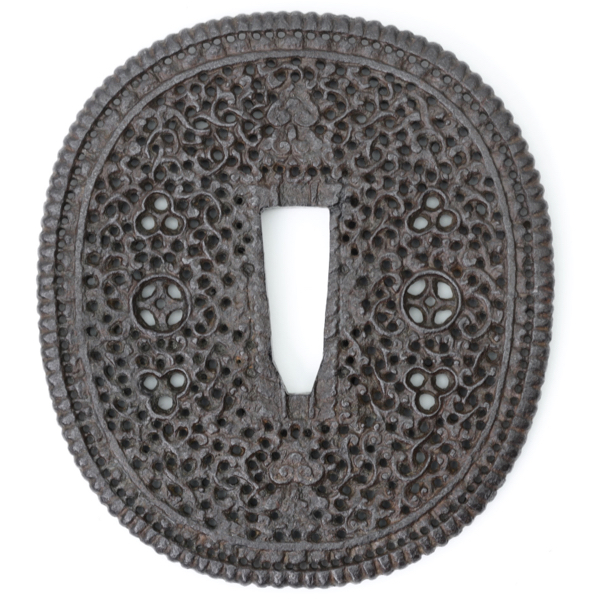
Yidao guard
Exceptionally large pierced iron guard for a Chinese yidao; "virtuous saber".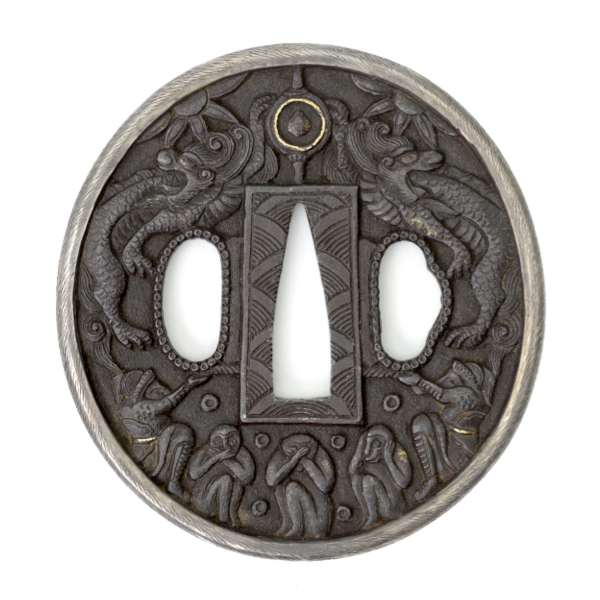
Three wise monkeys tsuba
Japanese sword guard depicting three wise monkeys conveying the message see no evil, hear no evil, speak no evil.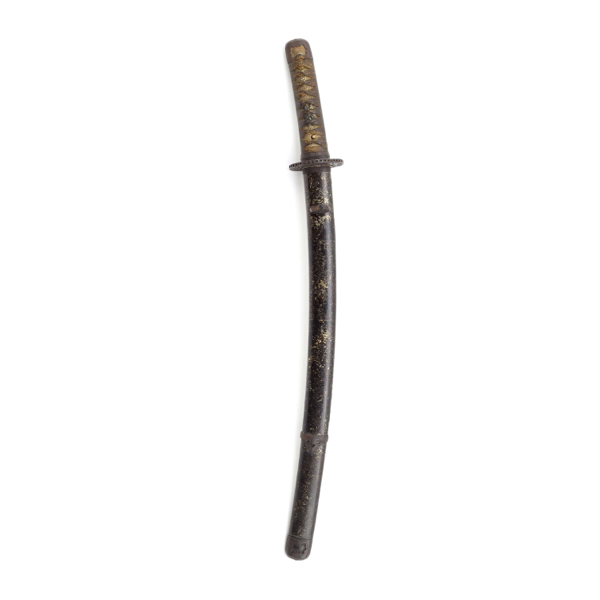
Koshirae (拵)
Japanese term for the mountings of an edged weapon.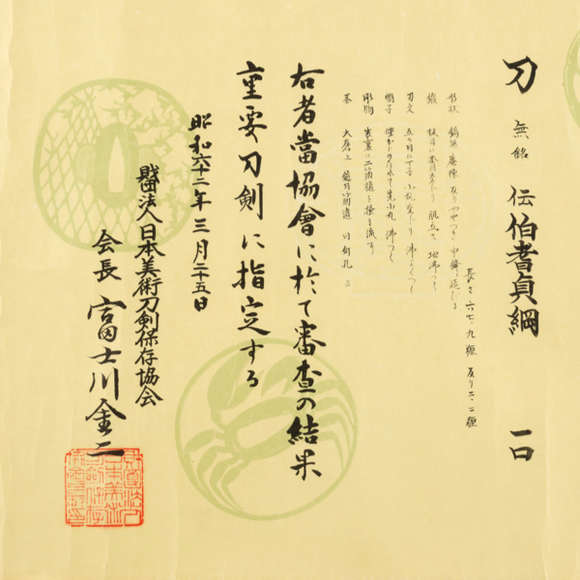
NBTHK Japanese sword papers
An introduction to NBTHK Japanese sword certifications and rankings.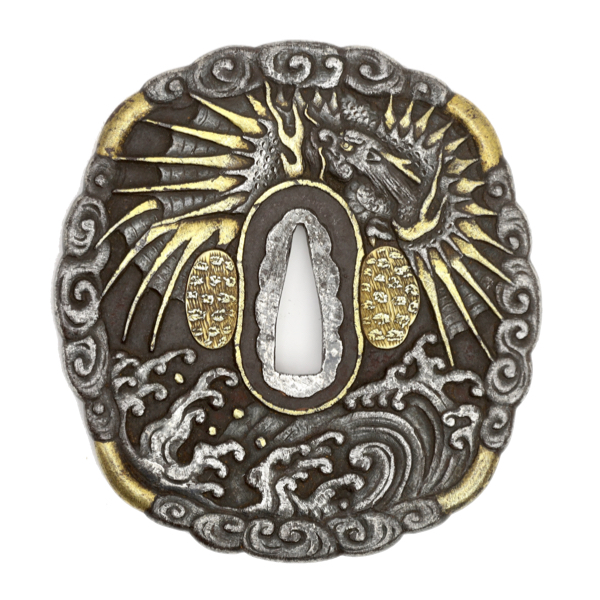
Winged dragon tsuba
A fine and unusually large tsuba. Attributed to Hizen by the NBTHK.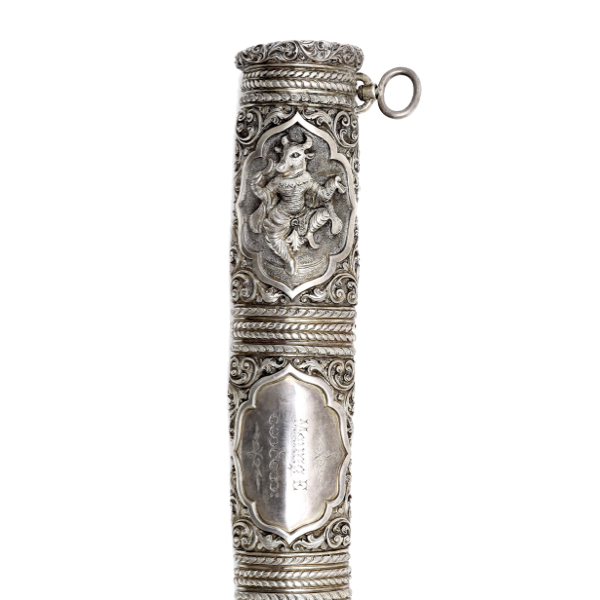
Fine Burmese silver sword scabbard
It represents the best of Burmese silversmithing with repousse work in high relief.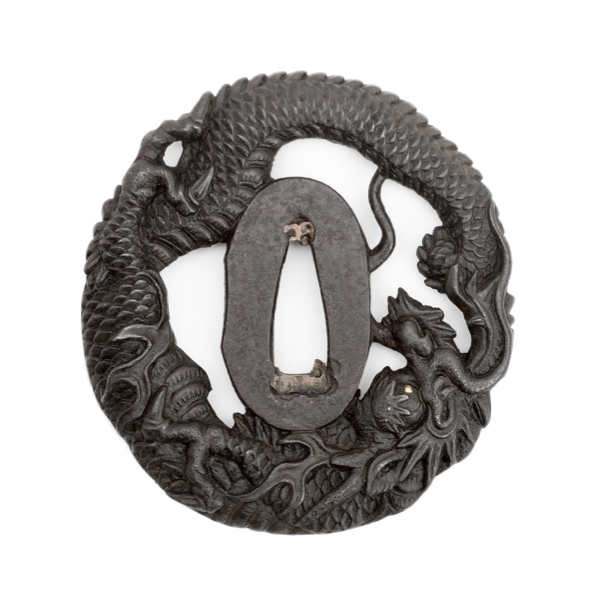
Fine Kinai dragon tsuba
Made by the Kinai group of Echizen, who originated as horimono carvers.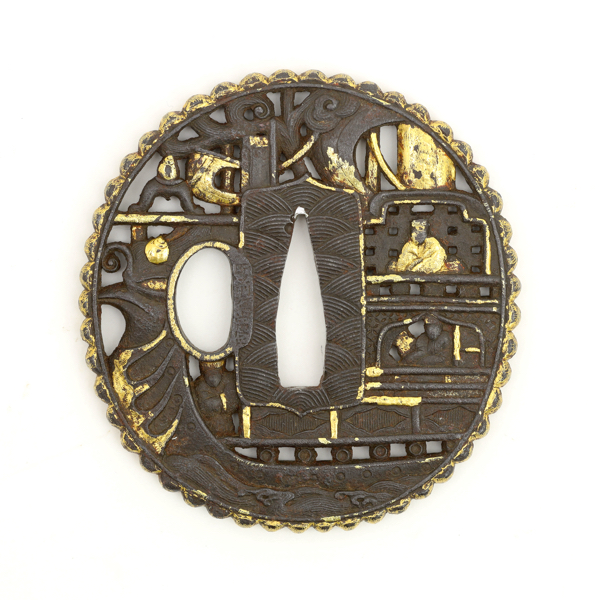
Signed nanban style ship tsuba
Signed by an artist named Kanesada from Higo.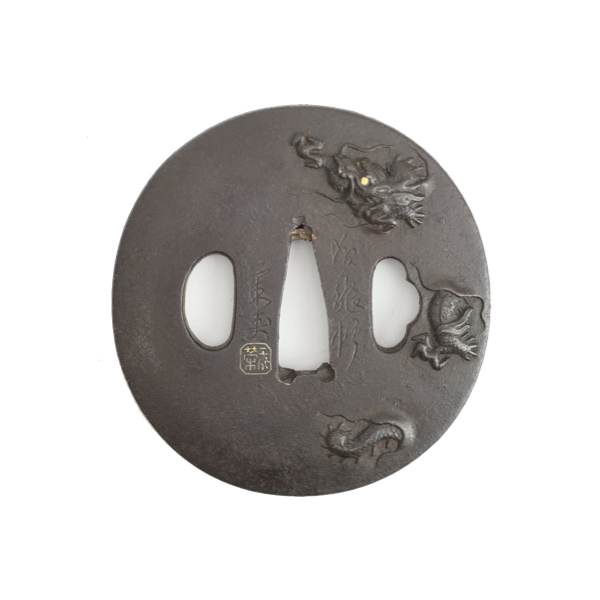
Seiryūken Eiju dragon tsuba
Tetsugendo school. Round plate with discoid cross-section, chiseled with dragons.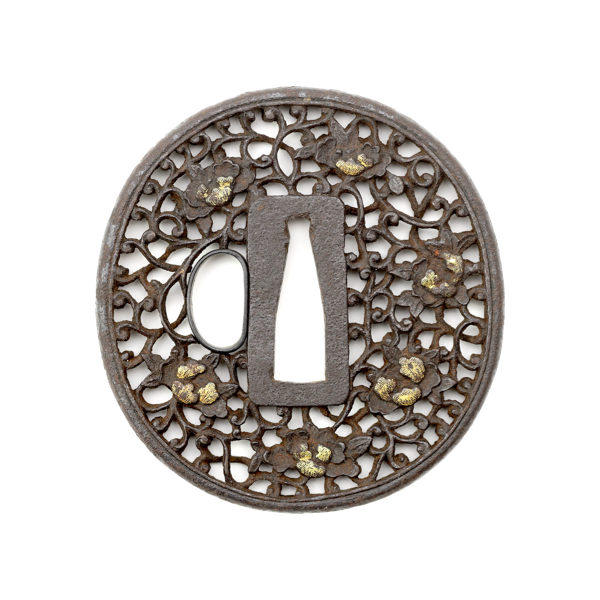
Peony karakusa tsuba
Executed in "nanban style" openwork with chiseled and gold-encrusted peonies.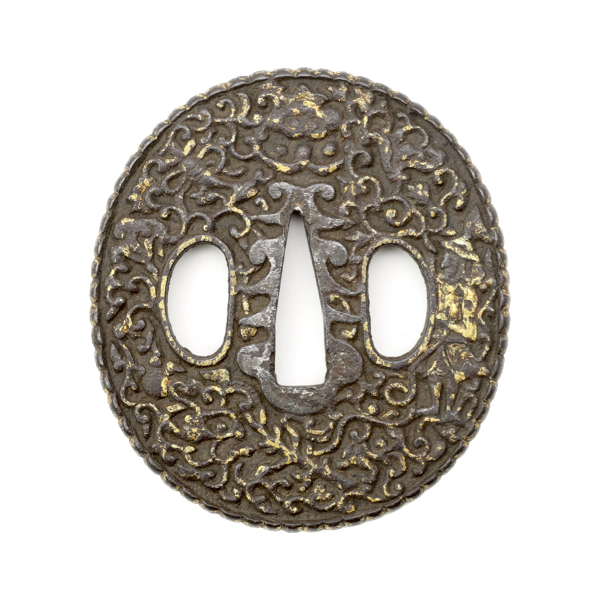
Sawasa style iron guard
Unusual piece with depiction of a foreign figure.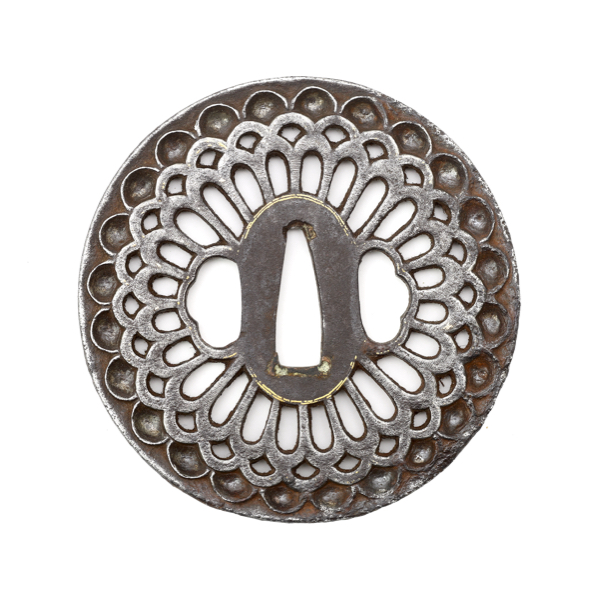
Iron chrysanthemum tsuba
Large example with gold and silver overlay.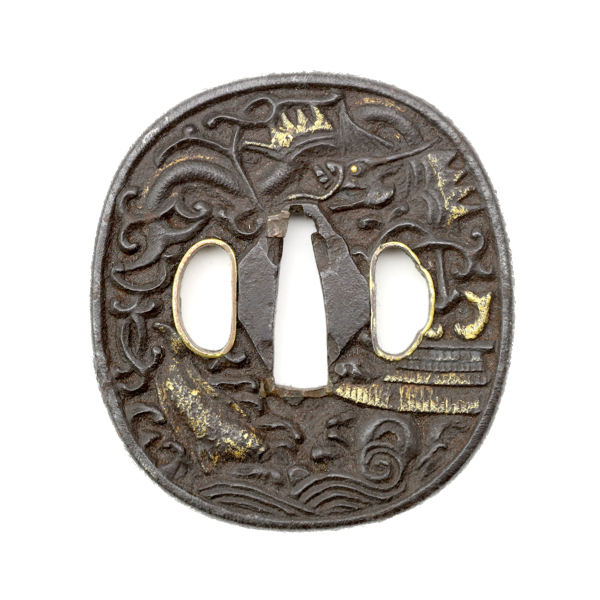
Unusual dragon gate guard
Asian sword guard of unknown origin, modified in Japan.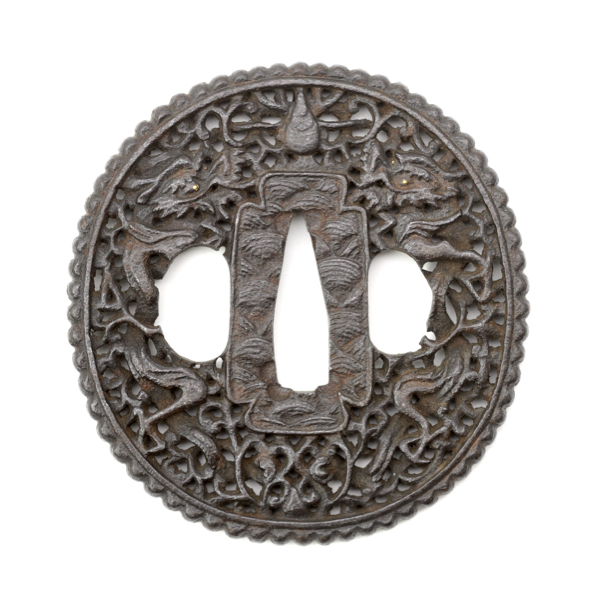
Japanese tsuba in Canton style
Also known as Kwanto-gata, with two facing dragon chasing a pearl.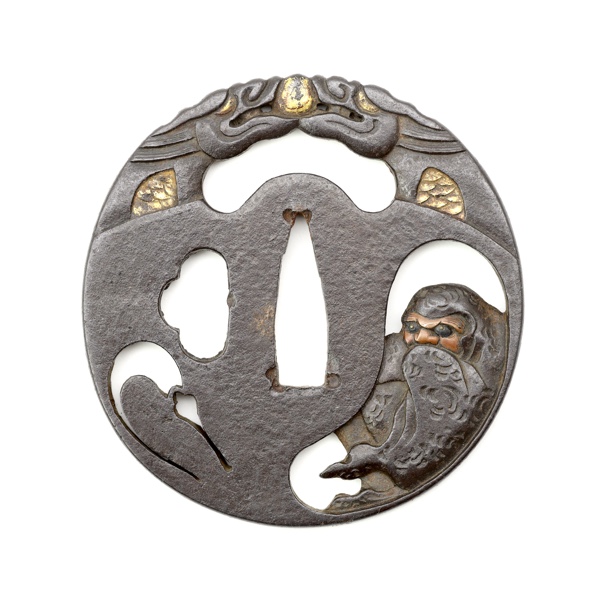
Daruma tsuba
A peculiar tsuba with a depiction of Bodhidharma and two dragon chasing a pearl.